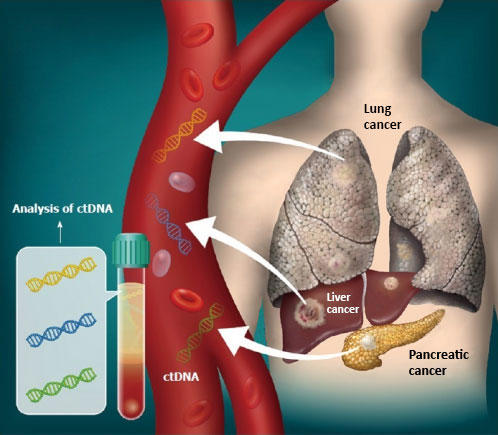
A key mystery about the origins of Earth's water may have been solved after an international team of scientists uncovered persuasive new evidence pointing to an unlikely culprit—the Sun.
In a paper published in Nature Astronomy, a team of researchers, including two from the University of Hawaiʻi at Mānoa School of Ocean and Earth Science and Technology (SOEST), describe how analysis of dust grains from the surface of an ancient asteroid suggests that extraterrestrial dust grains from asteroids and comets carried water to the surface of the early Earth. The water in the grains is produced by space weathering, a process by which charged particles from the Sun, known as solar wind, altered the chemical composition of the grains to produce water molecules.
The finding could answer the longstanding question about the sources of the water that covers 70% of Earth's surface—far more than any other rocky planet in our Solar System. Planetary scientists have been puzzled for decades over the source of Earth's oceans. One theory suggests that comets and asteroids brought the water to the planet in the final stages of its formation 4.6 billion years ago.

To test that theory, scientists have previously analyzed the isotopic "fingerprint" of chunks of asteroids which have fallen to Earth as water-rich carbonaceous chondrite meteorites. If the ratio of hydrogen and deuterium in the meteorite water matched that of terrestrial water, scientists could conclude that meteorites were the likely source.
The results weren't quite that clear-cut. While some water-rich meteorites' deuterium/hydrogen fingerprints match Earth's water, others do not. On average, these meteorites' liquid fingerprints do not line up with the water found in Earth's mantle and oceans. Instead, Earth has an additional different, slightly lighter isotopic fingerprint.
In other words, while some of Earth's water must have come from chunks of comets and asteroids, the forming Earth must have also received an additional contribution of isotopically-light water from another source.
Analyzing asteroid dust, one atom at a time
The University of Glasgow-led team used a cutting-edge analytical process called atom probe tomography to scrutinise samples from a different type of space rock known as an S-type asteroid, which orbit closer to the Sun than C-types. The samples they analysed came from an asteroid called Itokawa, which were collected by the Japanese space probe Hayabusa and returned to Earth in 2010.
Atom probe tomography enabled the team to measure the composition of the grains one atom at a time and detect individual water molecules. Their findings demonstrate that a significant amount of water was produced just below the surface of dust sized grains from Itokawa by space weathering.
The early solar system was a very dusty place, providing a great deal of opportunity for water to be produced at the surface of spaceborne dust particles. Water in this dust, the researchers suggest, would have constantly rained down onto the early Earth and contributed water to Earth's oceans.

"Over time, the 'space weathering' effect of the hydrogen ions can eject enough oxygen atoms from materials in the rock to create H2O—water—trapped within minerals on the asteroid," said lead author Luke Daly of the University of Glasgow's School of Geographical and Earth Sciences. "Crucially, this solar wind-derived water produced by the early solar system is isotopically light. That strongly suggests that fine-grained dust, buffeted by the solar wind and drawn into the forming Earth billions of years ago, could be the source of the missing reservoir of the planet's water."
"As recently as a decade ago, the notion that solar wind irradiation is relevant to the origin of water in the solar system, and even to Earth's oceans, would have been greeted with scepticism," said co-author John Bradley, affiliate researcher at SOEST's Hawaiʻi Institute of Geophysics and Planetology (HIGP). "By showing that water is produced in-situ on the surface of an asteroid, the study builds on the accumulating body of evidence that the interaction of the solar wind with oxygen-rich minerals in dust grains produces water. Since much of the dust throughout the solar nebula was inevitably irradiated prior to its accretion into larger objects, water produced by this mechanism is highly relevant to the origin of water in planetary systems and possibly the isotopic composition of Earth's oceans."
Supporting future space explorers
Their estimates of just how much water might be contained in space-weathered surfaces also suggest a way future space explorers could manufacture supplies of water on even the most seemingly arid planets.
"One of the problems of future human space exploration is how astronauts will find enough water to keep them alive and accomplish their tasks without carrying it with them on their journey," said co-author Hope Ishii, research professor at HIGP. "We think it's reasonable to assume that the same space weathering process which created the water on Itokawa will have occurred to one degree or another on many airless worlds like the Moon or the asteroid Vesta. That could mean that space explorers may well be able to process fresh supplies of water straight from the dust on the planet's surface. It's exciting to think that the processes which formed the planets could help to support human life as we reach out beyond Earth."
This research is an example of UH Mānoa's goal of Excellence in Research: Advancing the Research and Creative Work Enterprise (PDF), one of four goals identified in the 2015–25 Strategic Plan (PDF), updated in December 2020.
–By Marcie Grabowski






